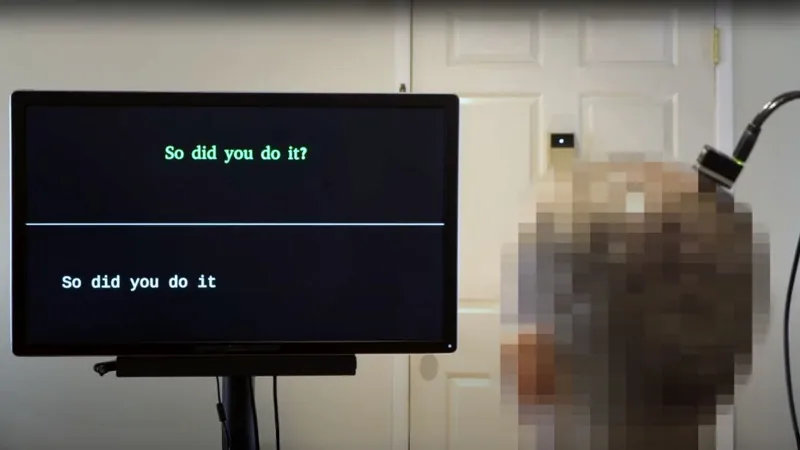
Breakthrough AI Technology Gives Paralyzed Patients Their Voices Back
2025-04-16
Author: Kai
Revolutionary AI Restores Speech for Paralyzed Individuals
In a groundbreaking achievement, researchers from UC Berkeley and UC San Francisco have developed an innovative AI-powered system that can restore natural speech to paralyzed patients—using their own voices—demonstrated effectively in a clinical trial with a severely paralyzed participant.
How This Cutting-Edge Technology Works
This remarkable system utilizes a combination of brain-computer interfaces (BCI) and advanced artificial intelligence to translate neural activity into real-time speech. The technology employs high-density electrode arrays and microelectrodes to capture brain signals from the surface and deeper layers, alongside non-invasive sensors measuring facial muscle activity, ultimately decoding thoughts into audible speech.
Key Features of the AI Speech System
1. **Real-Time Speech Synthesis**: Streamlining speech from brain signals in nearly real-time has been a game changer. The new AI model can decode neural data in just 80 milliseconds, eliminating previous delays and allowing seamless communication.
2. **Naturalistic Communication**: This technology enhances speech fluency, making conversations more expressive and relatable.
3. **Personalized Voice Output**: Before their injury, patients' voices are recorded and used to train the AI, enabling it to replicate their unique speech patterns. For those without prior vocalizations, a pre-trained text-to-speech model fills in the gaps.
Enormous Potential to Change Lives
This groundbreaking technology could drastically improve the quality of life for individuals suffering from paralysis or conditions like ALS. It empowers them to communicate effectively, express their thoughts, and connect with family and friends in a more genuine way. According to UCSF neurosurgeon Edward Chang, the rapid advancements in AI are heralding a future where BCIs can be integrated into everyday life.
Future Directions for Research
Researchers aim to enhance the AI's processing speed, make the synthesized voice more dynamic, and incorporate variations in tone, pitch, and loudness within the output. Furthermore, there’s potential to decode emotional nuances from brain activity, driving a deeper connection in communication.
A New Hope for Effective Communication
This AI advancement is not merely about translating thoughts into words; it's about giving individuals their voices back, opening doors to renewed relationships and conversations. The future looks optimistic as scientists and engineers work tirelessly to push boundaries and create real-world solutions that enrich lives.


 Brasil (PT)
Brasil (PT)
 Canada (EN)
Canada (EN)
 Chile (ES)
Chile (ES)
 Česko (CS)
Česko (CS)
 대한민국 (KO)
대한민국 (KO)
 España (ES)
España (ES)
 France (FR)
France (FR)
 Hong Kong (EN)
Hong Kong (EN)
 Italia (IT)
Italia (IT)
 日本 (JA)
日本 (JA)
 Magyarország (HU)
Magyarország (HU)
 Norge (NO)
Norge (NO)
 Polska (PL)
Polska (PL)
 Schweiz (DE)
Schweiz (DE)
 Singapore (EN)
Singapore (EN)
 Sverige (SV)
Sverige (SV)
 Suomi (FI)
Suomi (FI)
 Türkiye (TR)
Türkiye (TR)
 الإمارات العربية المتحدة (AR)
الإمارات العربية المتحدة (AR)